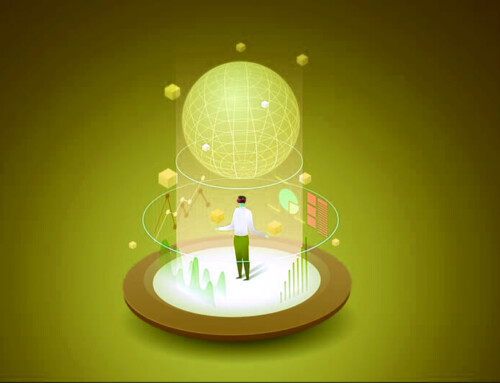The expectations employees have of their workplace and leadership have changed in several ways over the last couple of years. These expectations are known as the psychological contract between employees and their employer.
Historically, a paycheck, benefits, and perks were enough to keep most employees satisfied. Additional motivators were added such as training, coaching and mentoring, and commitments to the environment and community. But these are no longer enough. In fact, a PWC survey (1) found that these are now minimal requirements rather than great motivators to attract, engage, and retain talent.
Today, workers value relationships and connections. HubSpot conducted a study about the evolving workplace which evaluated remote, hybrid, and in-office workers. This study found that nearly 70% of employees feel disconnected and isolated from their teammates and are lonely. (2) Additionally, the study revealed that over half of workers would prioritize great relationships with colleagues over a 10% increase in pay. (3)
With workers desiring connections and community more than ever, organizations must learn how to prioritize social interactions and relationship building. Here are some strategies to drive growth, and engagement, and create a company culture that honors the new psychological contract for your employees.
BRIDGE THE DISCONNECT
Recent research shows that a sense of belonging is the second-highest predictor of employee intent to stay. (4) And yet, over two-thirds of employees feel disconnected from their managers and co-workers. (5)
What are the reasons for employees feeling disconnected?
- A poor onboarding experience (6)
- 92% of C-Suite executives cite company culture needs improvement (7)
- 80% of employees have only spoken to their manager once in the last 10 days (8)
- 69% of employees state that the organization doesn’t provide ample opportunities for growth or upskilling. (9)
- 72% of employees aren’t interacting as much as they would like to. (10)
- 44% of workers say management doesn’t encourage social interaction (11)
- 36% of employees cite social interaction isn’t built into the workplace (12)
- 33% of workers claim they don’t have time for social interaction at work (13)
Employee disconnection is concerning because it aids in employee engagement and has benefits for the organization itself. A poll by BetterUp (14) discovered that socially connected organizations are:
- 52% more likely to generate new and useful solutions when faced with challenges.
- 38% more likely to take calculated risks with significant benefit payoff.
- 17% less likely to experience conflict or toxic workplace culture.
- More likely to attract key talent.
- 32% higher rating on Glassdoor.
- 25% more likely to be recommended by an employee.
It comes as no surprise that disconnected employees are the number one challenge facing the C-Suite. (15) This is why strategies to aid in social interaction and relationship building are crucial to the new psychological contract.
EMBRACE THE HUMAN ADVANTAGE
Technology can be a great asset. The recent surge of AI can take care of many menial tasks to free up time for more important activities. At the end of the day, regardless of available technology, people are truly your organization’s best assets. This is one reason to ensure that employees feel connected to each other and that technology is a tool, not a replacement for human beings.
How to do it:
- Be transparent.
Some jobs may, indeed, be reduced as technology adapts and grows more intelligent. However, other jobs may open because of technological evolution. - Create opportunities for continuous learning.
Prepare your employees for more than what they need to do in their present role. Keep them actively engaged in learning new skills so that they evolve as technology and your company does. - Add AI into current work duties.
Integrate AI or other technology solutions into current workflows, as may be applicable for various roles. This helps to emphasize that these tools and resources are intended to enhance productivity, efficiency, and innovation rather than replace workers. Here are a few ways AI can be implemented in your organization:- Automate basic service and support queries (ranging from frequently asked questions to resolving common problems) with chatbots to handle customer inquiries 24/7/365.
- Improve sales processes with predictive analytics, customer segmentation, upselling, cross-selling, lead nurturing, and other campaigns.
- Make marketing more effective such as optimizing websites for search engines, bid shading for ad placements, project management, inspiration for design mock-ups, persona research, scaling content research, and more.
- Safeguard your reputation online by monitoring your brand, keywords, or other details relevant to your company.
- Enhance cybersecurity to detect threats before they cause damage by monitoring networking activity, identifying anomalies, and responding to threats (such as hacking, and malware) in real-time.
- Refine your job recruiting process to post job openings faster, track talent pipelines, schedule interviews, and make onboarding easier.
- Build a social community of humans.
AI tools are built on data input and algorithms, but they can alter the way that people interact with each other and their perceptions of one another. One study discovered AI influenced social dynamics. Specifically, it could alter how a receiver interpreted a sender’s message. (16) To avoid sacrificing the personal characteristics of the human voice, it is important to set aside time to interact with each other, build relationships and strengthen bonds.
CREATE MEANINGFUL SOCIAL INTERACTIONS
Research (17) has demonstrated that people who have strong relationships are more resilient. As mentioned before, those relationships have big benefits to organizations. (18) Therefore it’s in an organization’s best interest to seek to foster a sense of community and create an environment that encourages social interactions. Not only does that help employees live healthier and happier lives, but organizations reap the benefits.
How to do it:
- Make connections easier.
Whether it’s a buddy for a new hire that can help navigate the ropes or a mentor that an employee can count on, these connections can prove invaluable. By making these key connections more accessible to employees, they will have someone to ask questions, seek guidance, bounce ideas, and develop a bond. - Provide daily opportunities for social interactions.
There are numerous options to consider when it comes to opportunities to enhance relationship-building and social interactions. Here are just a few:- Brainstorming Activities
- Constructive Criticism or Feedback
- Expressing Appreciation/Gratitude
- Healthy Competitions
- Problem Solving or Innovation
- Meetings
- Sharing Experiences
- Dining Together
- Incorporate more team-based projects.
Team projects don’t just encourage collaboration and teamwork. They also curb loneliness and isolation. Groups allow individuals to connect, interact and get to know each other, experience different perspectives, and find common interests. - Connect at a deeper level.
Allow employees to contribute to the organization outside of their standard job duties. Significant changes or important decisions are ideal opportunities for employees to be involved in processes that impact them. When they feel that they matter, they have a purpose and they offer value, they are less likely to feel secluded or disconnected.
ADD MORE TEAMBUILDING OPPORTUNITIES
High-performing organizations that are productive, efficient, and profitable also have quality teams. While it may seem obvious, these high-functioning teams are also more collaborative, innovative, and resilient than other teams. But what makes them truly special is the social interactions, relationships, and bonds they share with one another. Creating the ideal team requires more than just finding the right people to fill the role. It requires allowing the team to interact with each other to uncover aspects that spark connection and strengthen bonds.
How to do it:
- Look at common interests.
People tend to connect faster with others who have something in common. Hobbies, activities, interests, volunteering, sports teams, and so forth are just a few examples. - Evaluate mutual goals.
One way to minimize conflict, think in silos, or prevent “us vs. them” mentalities is to ensure that everyone on a team shares a mutual goal. A common objective shared among a team ensures everyone is working toward the same outcome and builds relationships along the way. - Put the relationship first.
It’s human nature for conflict to occur and for someone to have hurt feelings. Instead of this blossoming into something more that impacts the entire team, prioritize the relationship. Often conflicts arise out of someone not feeling validated, respected, appreciated, or valued. By simply recognizing the human need to be heard and accepted, conflicts can be minimized yet the other person’s contributions are acknowledged. So instead of “Sandy, you have voiced your opinion on this…” say “Sandy, you have provided some valuable insight that we haven’t heard from others.” - Have some fun.
Teambuilding doesn’t always need to be about work. In fact, some of the best teambuilding can be done away from the office. Be playful. Have fun.- For a guide on teambuilding read this article.
- For teambuilding strategies, click here.
- For ways to combine teambuilding with charitable giving, read this article.
Honoring the psychological contract of today’s employees is about providing a sense of belonging, creating opportunities for social interaction, and forging connections at a deeper level. It’s not just good for the organization-employee relationship. It’s also essential for employees to be engaged and effective to drive high performance.
Are you looking to enhance employee engagement through team building? If so, contact Gavel International to see how working with a meeting planning company can benefit your organization.
_______________________
SOURCE(S):
1 https://www.pwc.com.au/important-problems/future-of-work/what-workers-want-report.pdf
2 https://www.hubspot.com/company-news/2023-hybrid-work-report
3 https://www.hubspot.com/company-news/2023-hybrid-work-report
4 https://www.betterup.com/blog/belonging-tax
5 https://www.gethownow.com/blog/return-to-work-report
6 https://www.zdnet.com/article/employees-are-feeling-disconnected-from-their-company-culture-the-solution-might-lie-in-the-onboarding-process/
7 https://join.getairspeed.com/deeper-cause-great-resignation/
8 https://www.gethownow.com/blog/return-to-work-report
9 https://www.ragan.com/over-half-of-workers-feel-disconnected-from-their-colleagues-study-says/
10 https://www.zdnet.com/article/employees-are-feeling-disconnected-from-their-company-culture-the-solution-might-lie-in-the-onboarding-process/
11 https://www.cnbc.com/2022/09/13/workers-say-this-is-the-no-1-reason-theyll-quit.html
12 https://www.cnbc.com/2022/09/13/workers-say-this-is-the-no-1-reason-theyll-quit.html
13 https://www.cnbc.com/2022/09/13/workers-say-this-is-the-no-1-reason-theyll-quit.html
14 https://workplaceinsight.net/nearly-half-of-people-feel-disconnected-from-colleagues/
15 https://join.getairspeed.com/deeper-cause-great-resignation/
16 https://news.cornell.edu/stories/2023/04/study-uncovers-social-cost-using-ai-conversations
17 Pfeffer J. Dying for a Paycheck: How Modern Management Harms Employee Health and Company Performance and What We Can Do About It. New York: HarperCollins Publishers; 2018.
18 https://workplaceinsight.net/nearly-half-of-people-feel-disconnected-from-colleagues/
This article was last updated on August 16, 2023
- 5 Ways to Build a Productive and Participatory Meeting Culture - March 31, 2025
- Memorable Meetings in Abundant Sunshine and the Natural Beauty of Phoenix - March 24, 2025
- Build a Culture of Curiosity and Solutions-Driven Change - March 17, 2025






